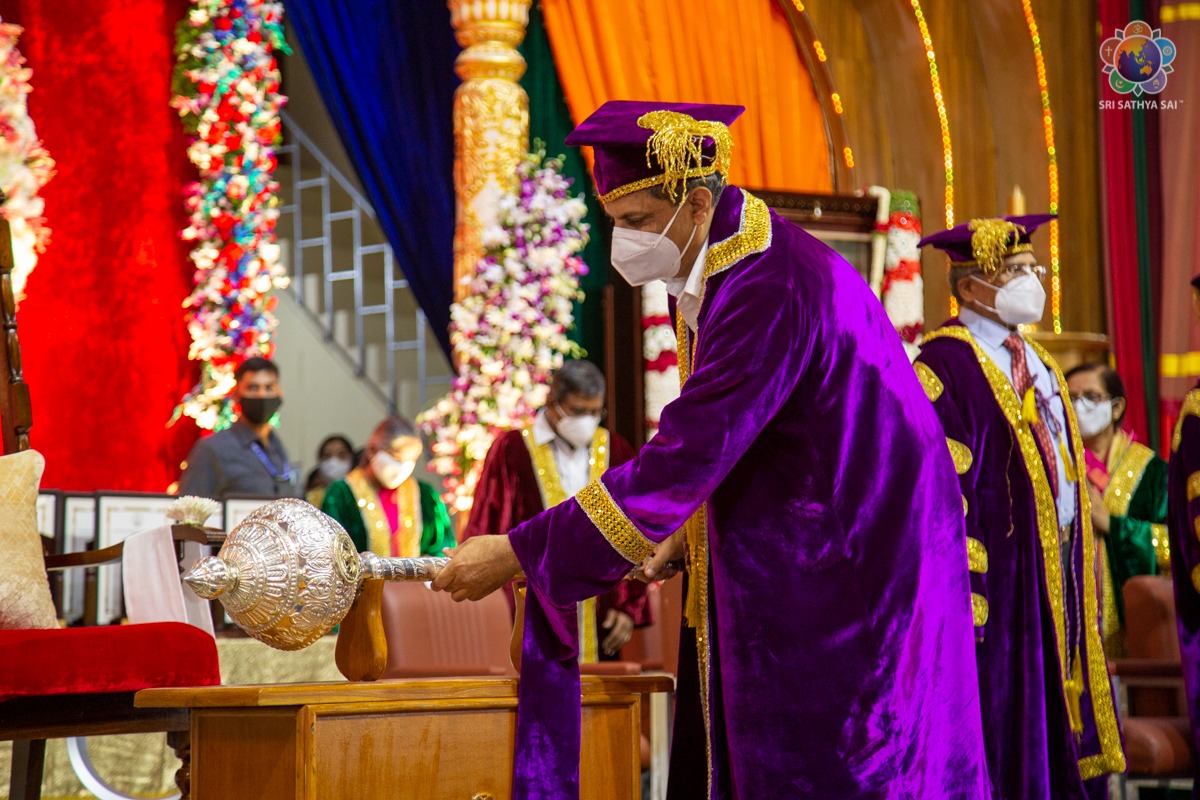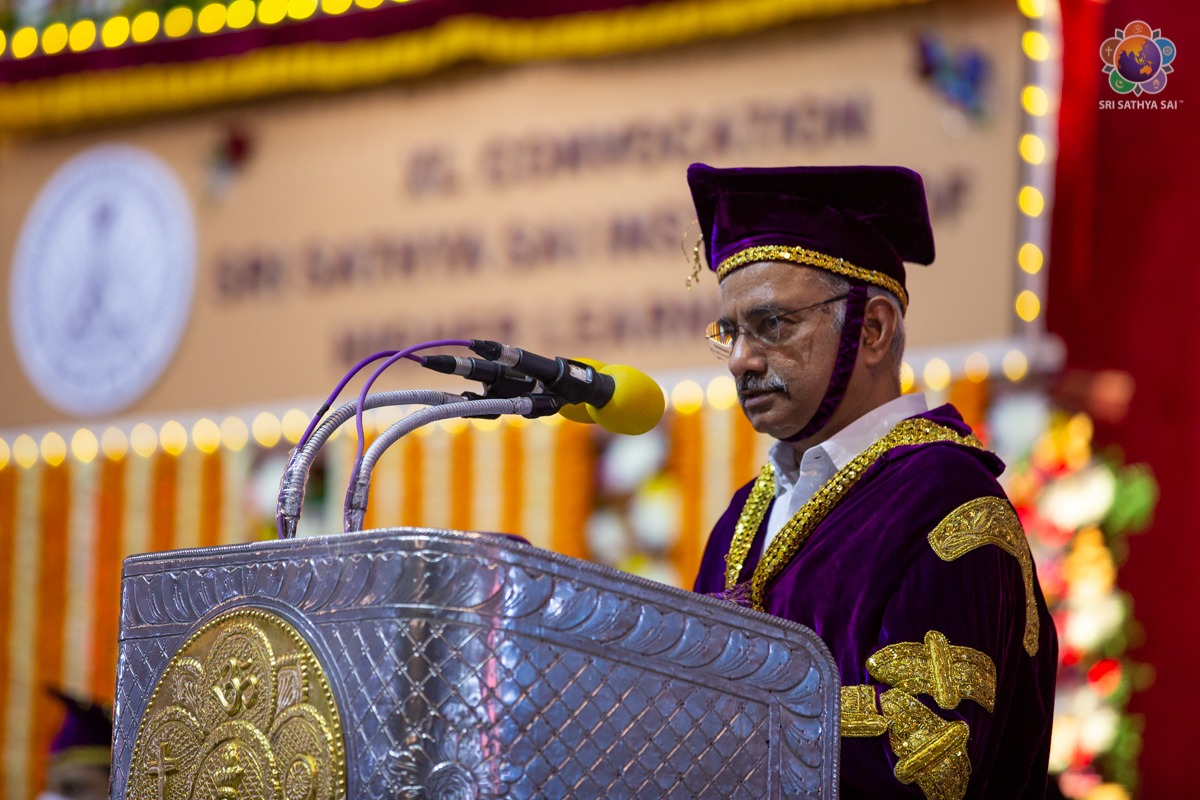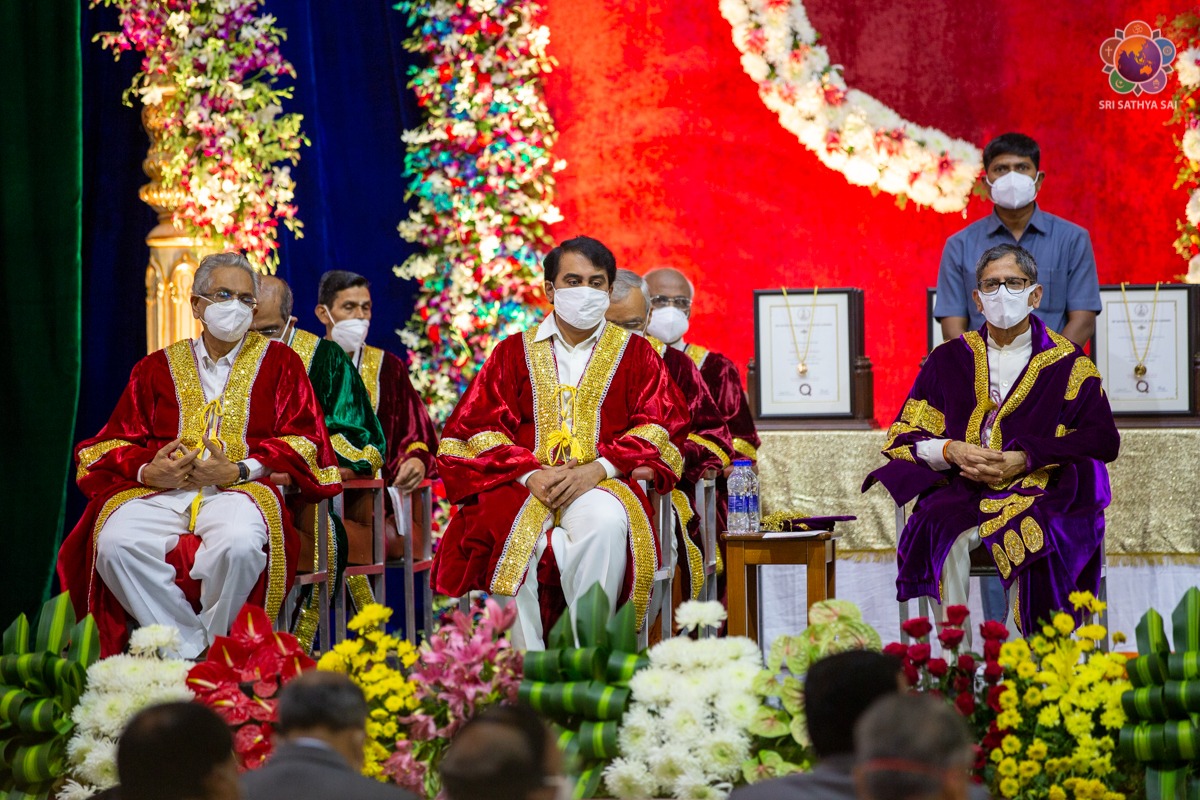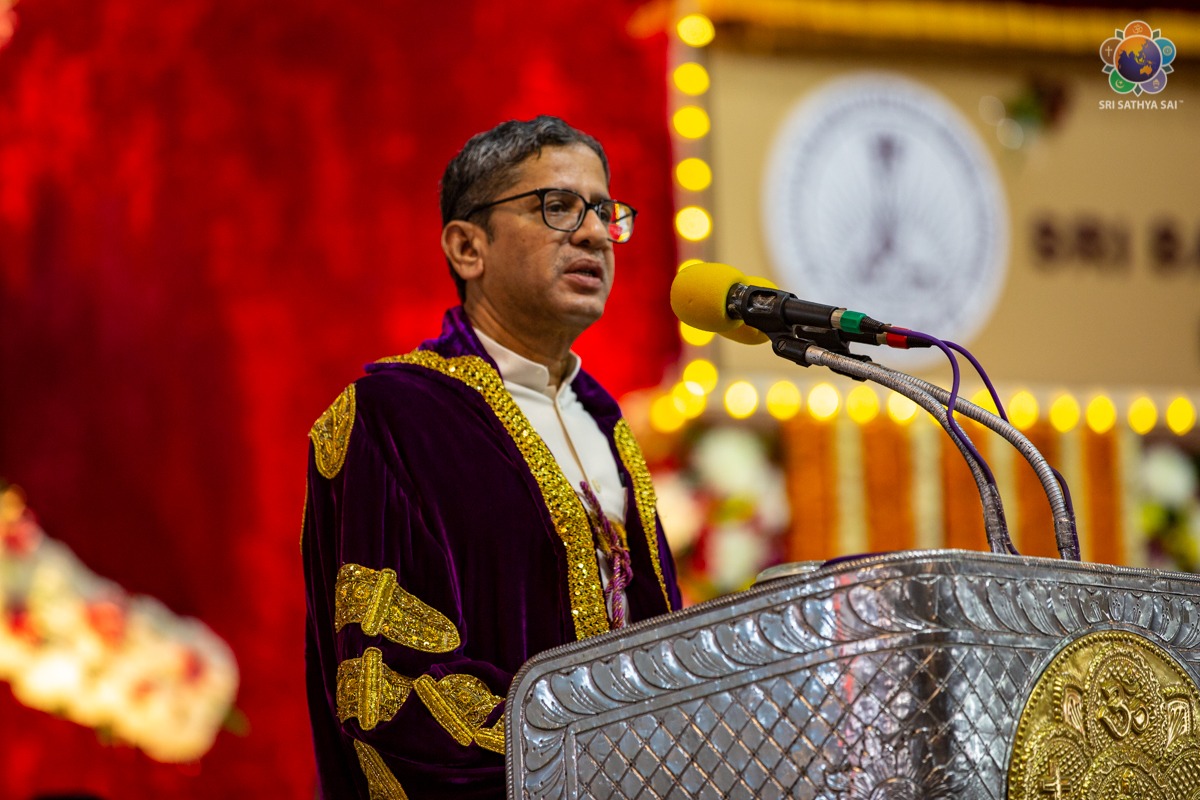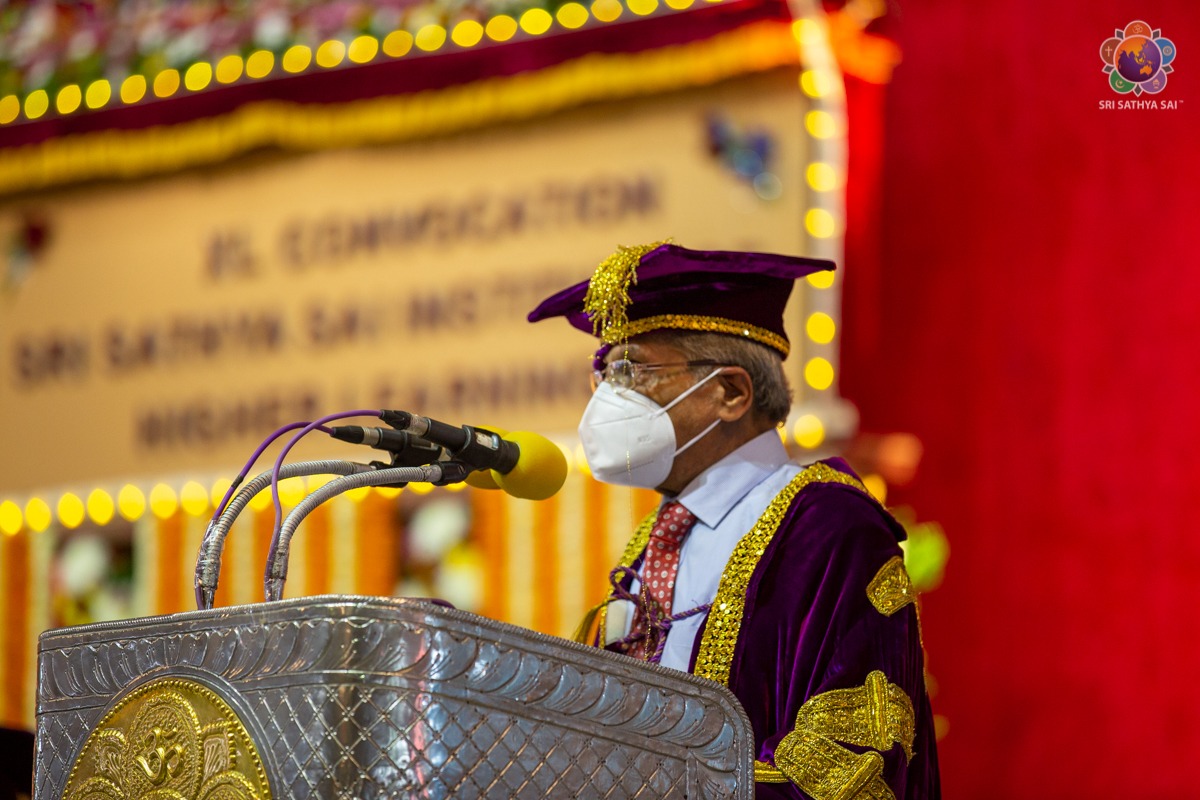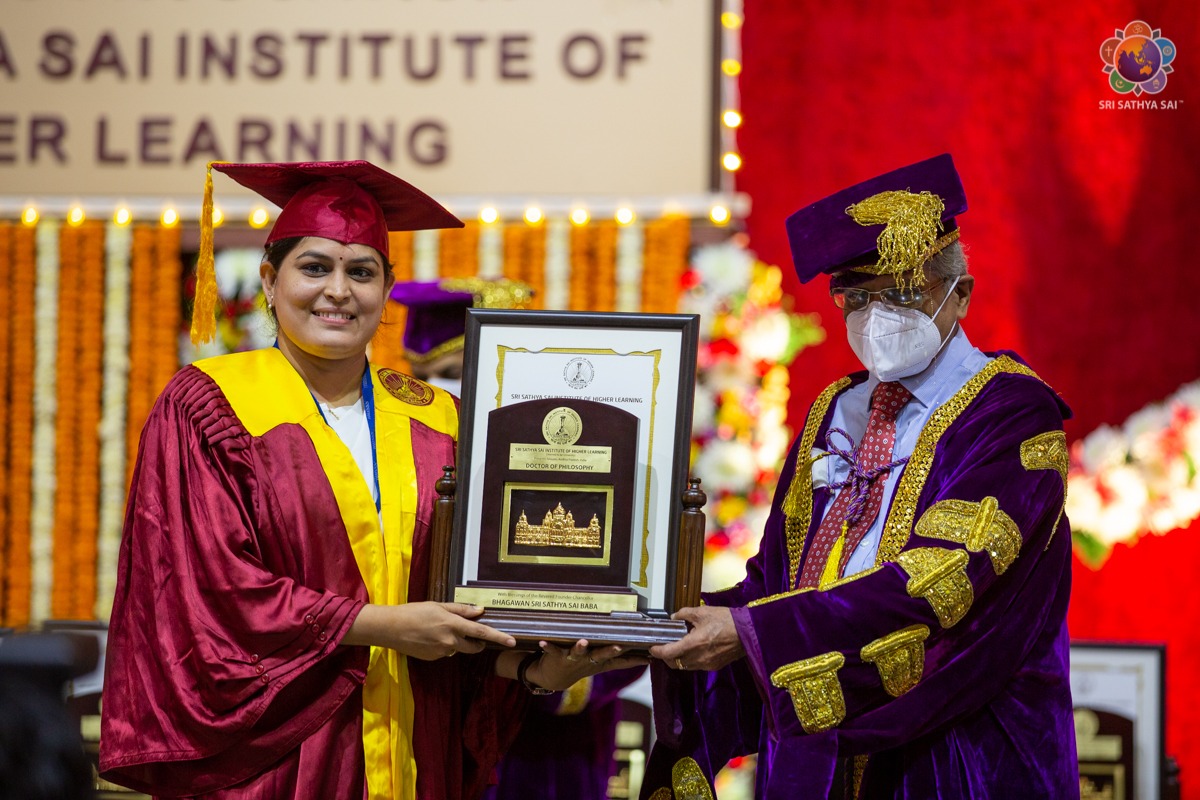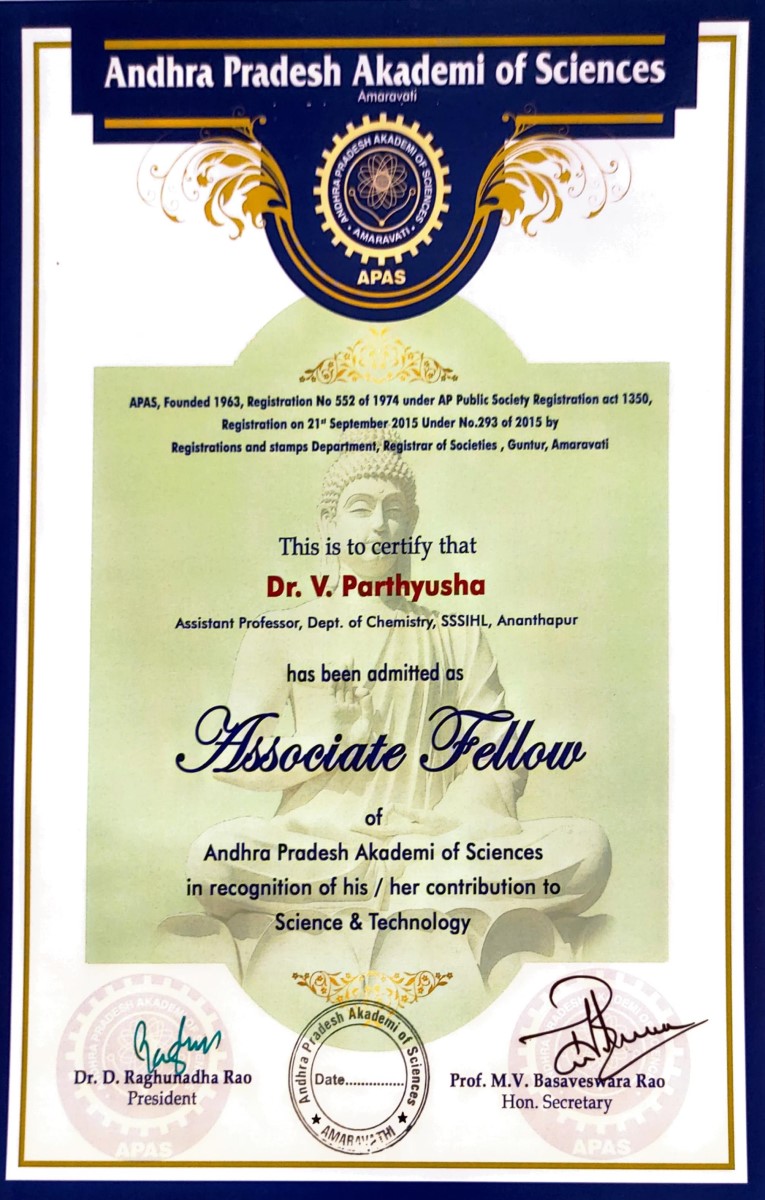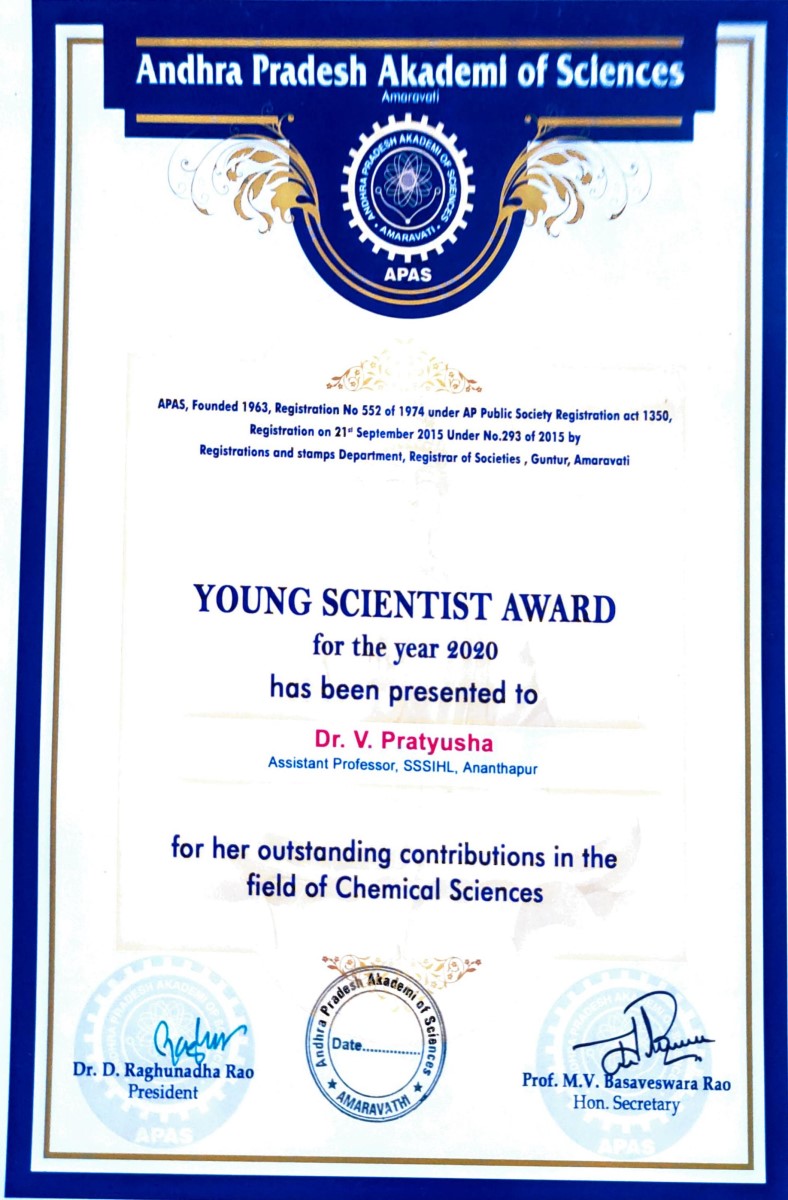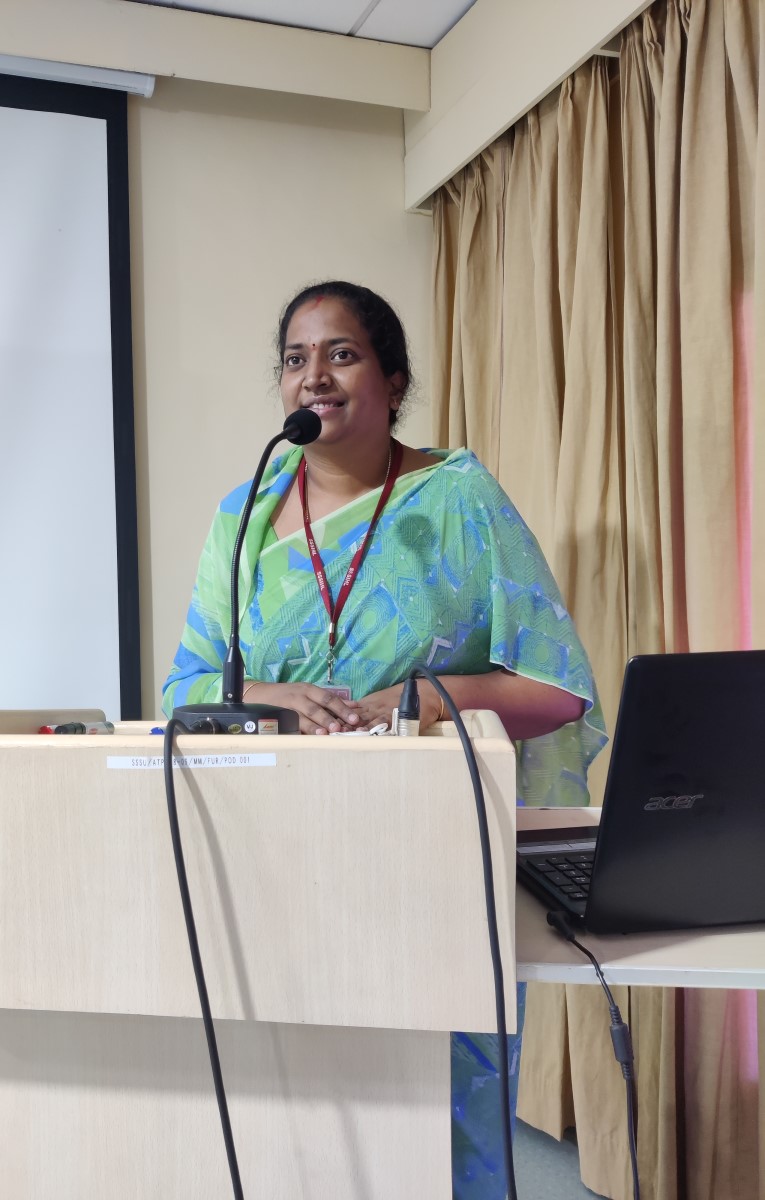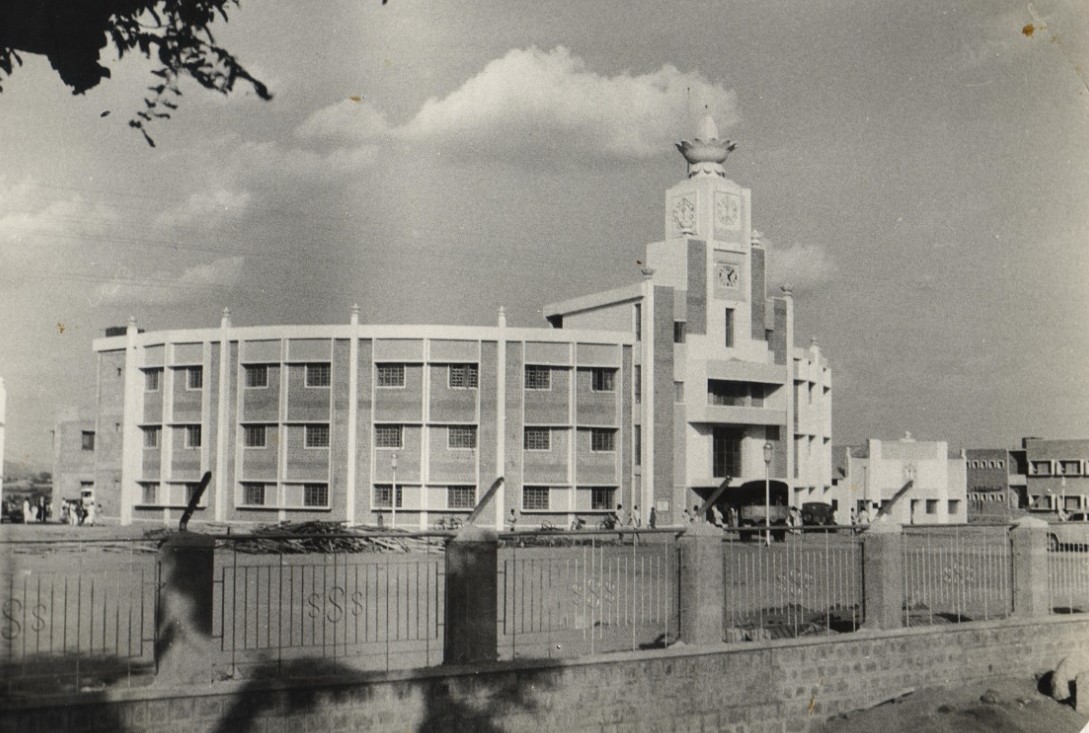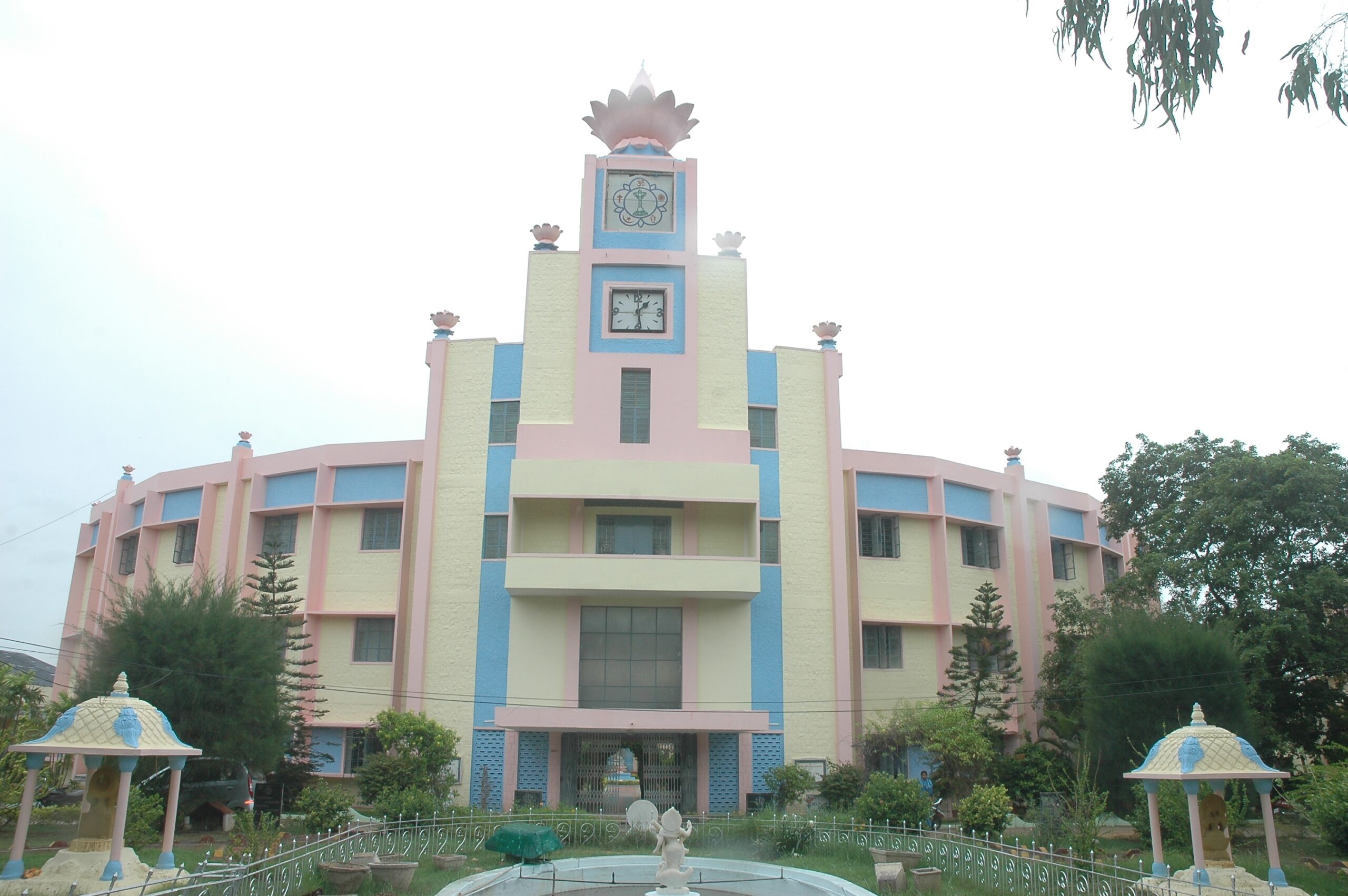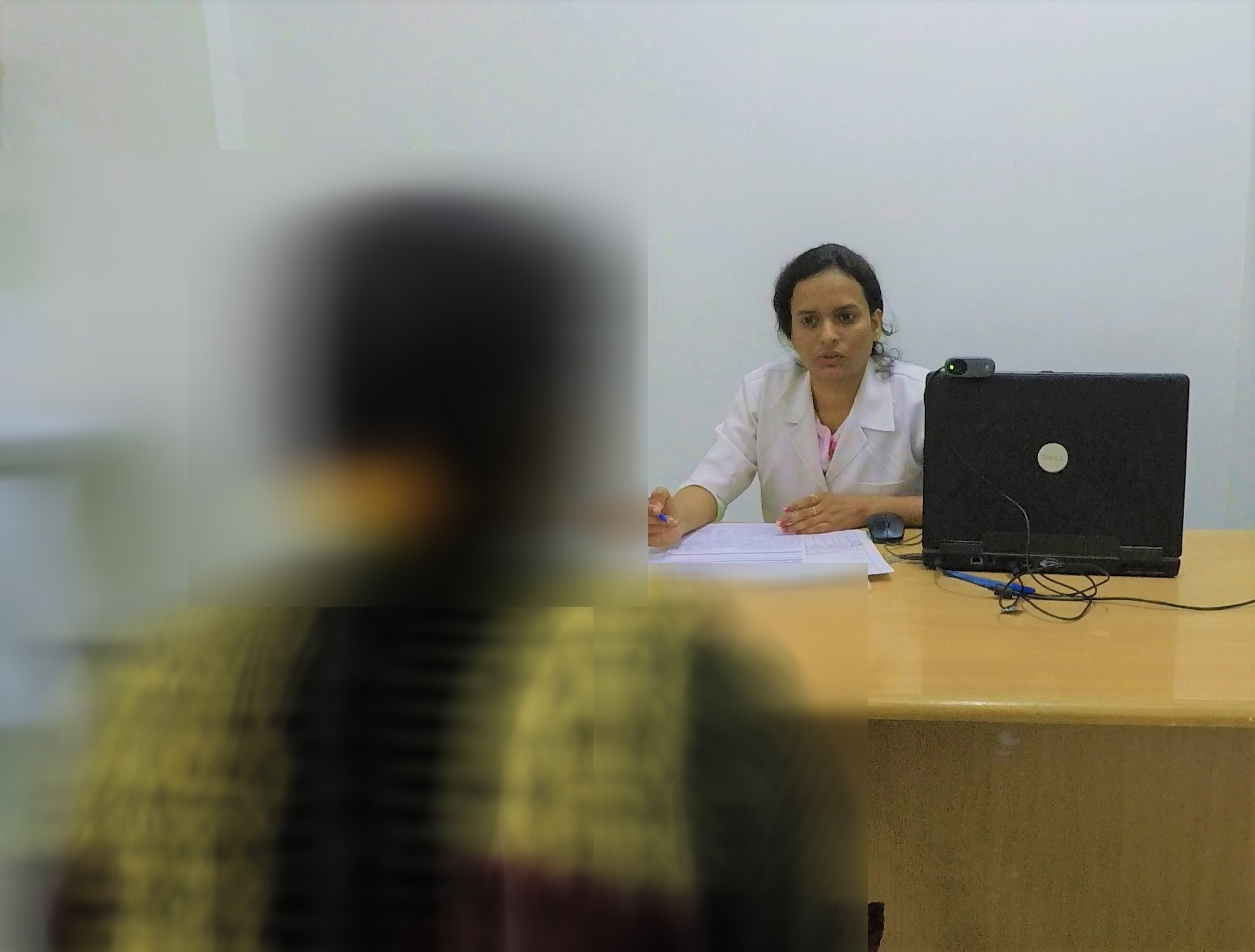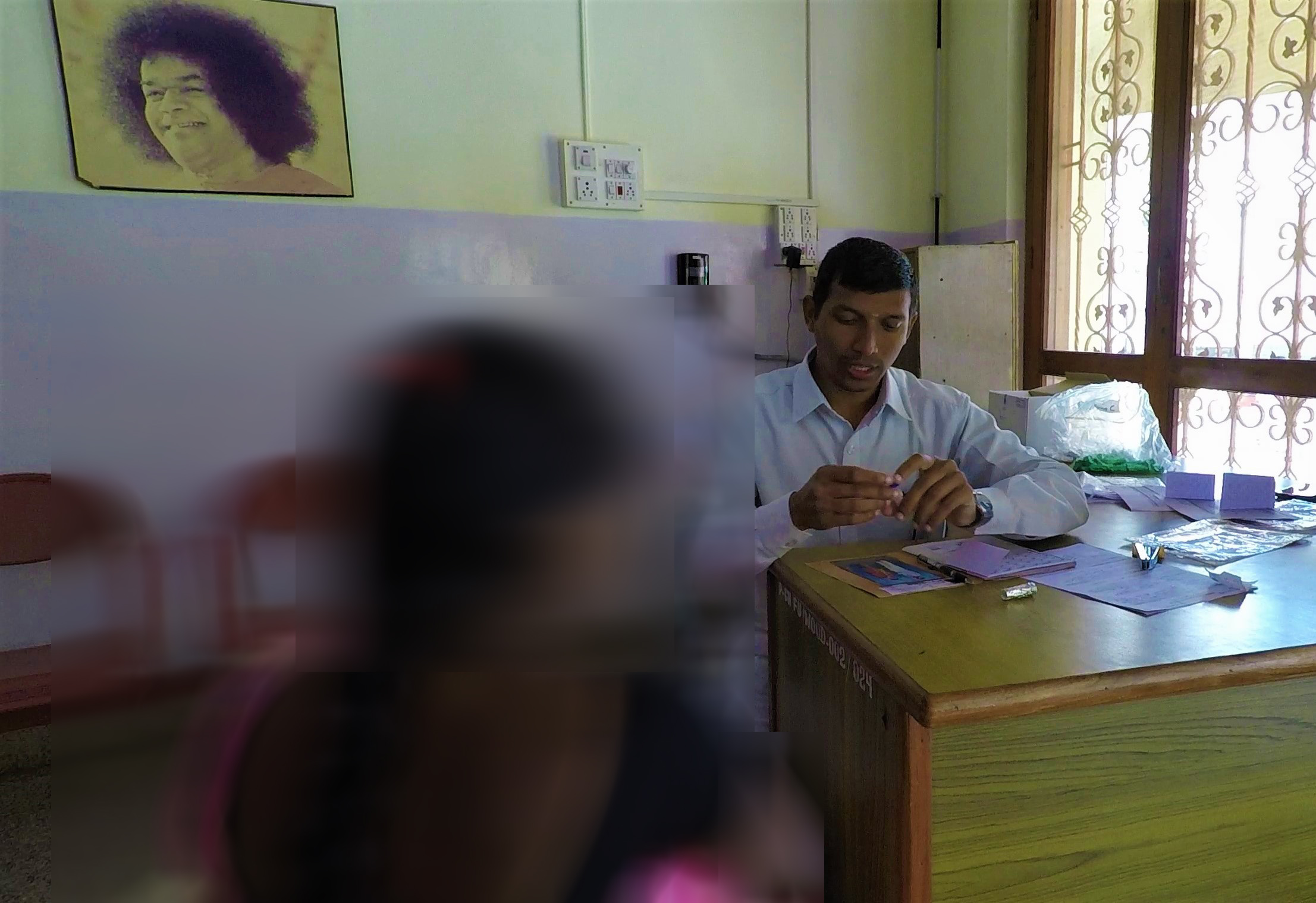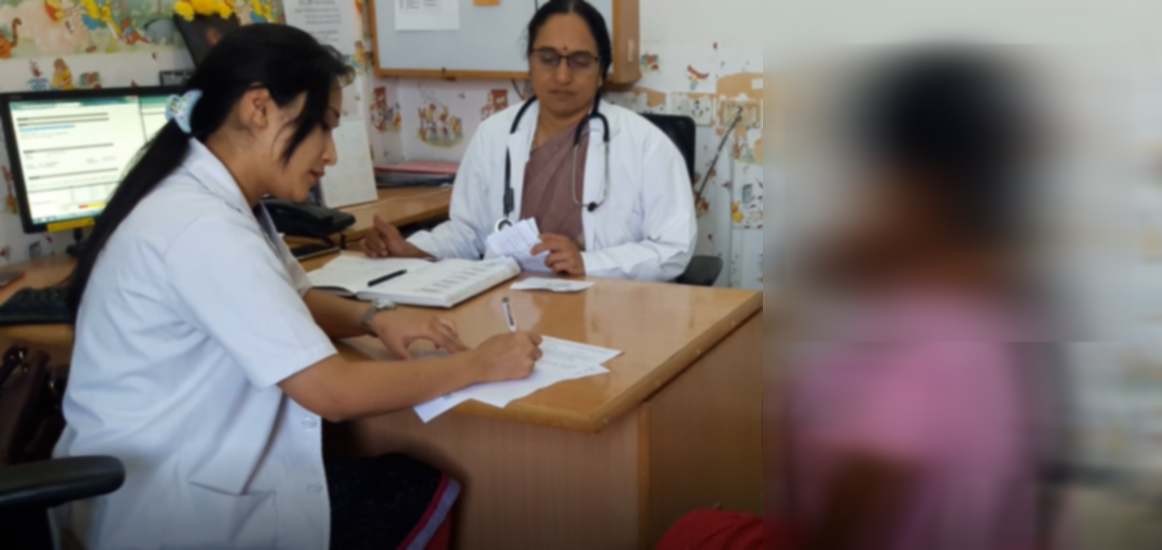Official Event Press Release
The official media release for the event can be downloaded here.
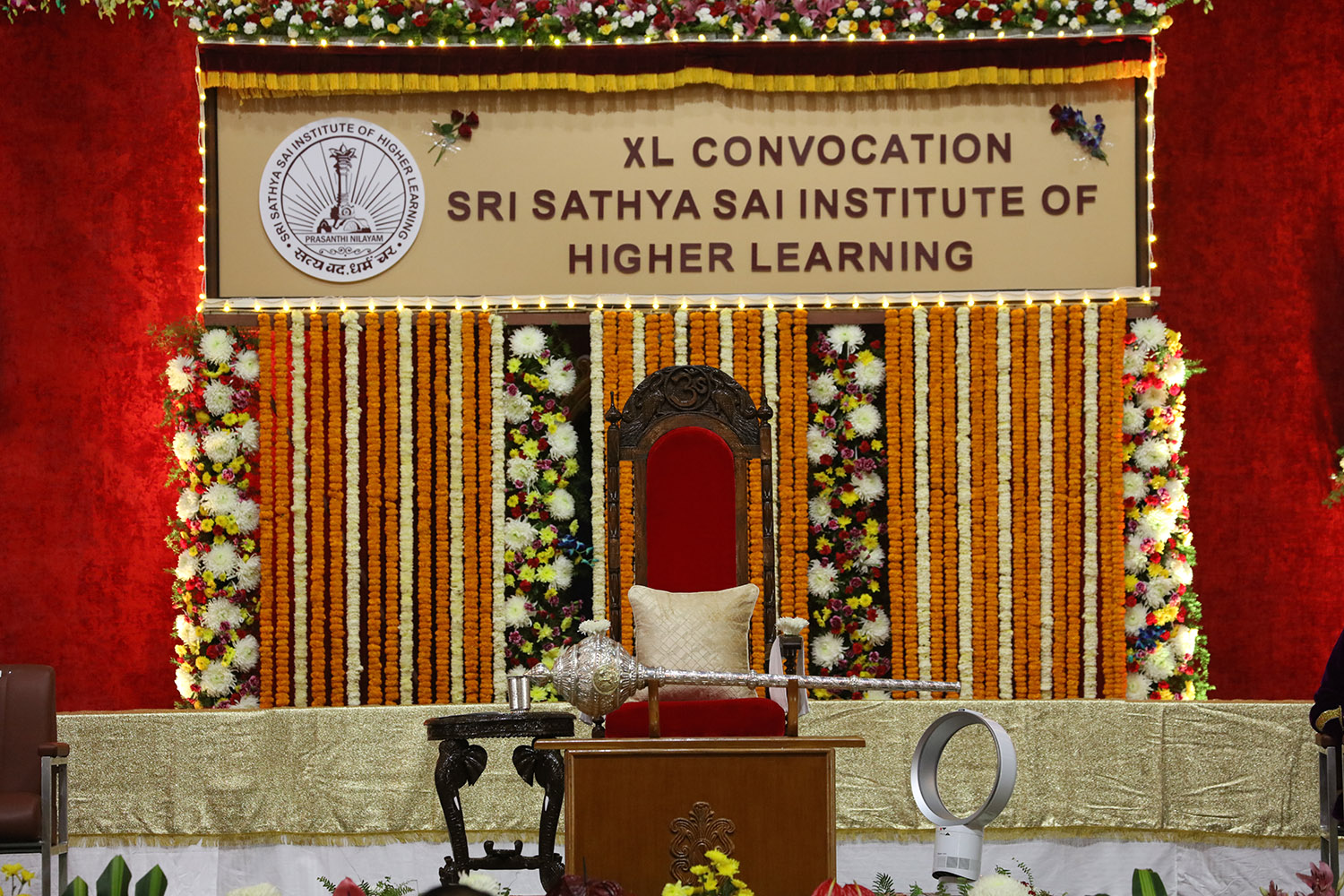
SSSIHL Annual Convocation – 2021
22 November 2021
I hereby solemnly declare and promise that, I will in my daily life and conversation, and in thought, word and deed, conduct myself as befits a member of the Sri Sathya Sai Institute of Higher Learning. I will to the utmost of my capacity and opportunity, support the cause of sound learning, humanity, morality and spirituality. As far as lies in me, I shall uphold and advance the social and indeed all round welfare of my countrymen and fellowmen.
Convocation Oath
Sri Sathya Sai Institute of Higher Learning
Sri Sathya Sai Institute of Higher Learning (SSSIHL) (Deemed to be University) held its 40th Annual Convocation in the Poornachandra Auditorium, Prasanthi Nilayam, Andhra Pradesh in the Divine Presence on 22 November 2021 at 9:10 a.m.
The grand ceremony saw the Honourable Chancellor, Sri K Chakravarthi, IAS (Retd.), admit candidates to their degrees.
SSSIHL was honoured to have the Chief Justice of India, Hon’ble Mr. Justice N. V. Ramana, as the chief guest for the event.
The event began at 9:10 a.m. when the Chief Guest along with the Chancellor, Vice-Chancellor, Registrar, Controller of Examinations, Members of the Sri Sathya Sai Institute of Higher Learning Trust, the Board of Management, Academic Council, Deans, HoDs and other distinguished delegates, entered the Poornachandra Auditorium in Prasanthi Nilayam with the Registrar of the University carrying the ceremonial mace.
Following the invocatory Veda chanting from Taittriya Upanishad, the Vice-Chancellor, Prof. (Dr.) C B Sanjeevi prayed to the Revered Founder Chancellor to declare the convocation open. The Convocation was then declared open in the Divine voice of Bhagawan Sri Sathya Sai Baba.
The programme included speeches by the Vice-Chancellor, the Chief Guest and the Revered Founder Chancellor (video broadcast of a previous Convocation Address).
Ph.D. Awardees 2021/22
S R Pranav Sai – Actuarial Science
Enhancing the Operational Efficiency of the Non-Life Insurance Business in India by Integrating Actuarial and Data Science Techniques
Rohan Yashraj Gupta – Actuarial Science
Data Driven Fraud Prevention and Detection in Health and Motor Insurance Business using Actuarial and Data Science Techniques
Isha Sai – Biosciences
Investigations on Biochemical and Biological Aspects of Two Wild Edible Mushrooms of Anantapur (A.P.)
Skanda S – Biosciences
Bioactive Potential and Bioremediation Capacity of Soil Derived Fungal Isolates from Puttaparthi, A.P., India
Kottapalli K Jayant – Biosciences
Studies on the biological potential of endophytic micro-fungi associated with medicinal plants – Ficus religiosa (L.) & Phyllanthus emblica (L.)
Balaram Khamari – Biosciences
Understanding Nitrofurantoin Resistance in Enterobacteriaceae: A Systematic Analysis of the Interplay Between Resistance Acquisition and Fitness
Prasanth Ghanta – Biosciences
Investigation into the anti-inflammatory potential of the alkaloids of Adhatoda vasica Nees.
Pachi Pulusu Chanakya – Biosciences
Genomic analysis of clinically isolated antibiotic resistant variants of Pseudomonas aeruginosa and heteroresistant Morganella morganii
Manmath Lama – Biosciences
Genomic Insights into the Evolutionary Dynamics of Clinically Relevant, Emerging Novel Bacterial Pathogens
Thota Sai Manohar – Biosciences
Metabolic Re-wiring Modulates Mutant Huntingtin Aggregation in Huntington’s Disease
Sujith Kumar P – Biosciences
Integrated analysis of clinical data, metabolomics and cell culture model system to elucidate mechanisms, potential biomakers and therapeutic targets in Glaucoma
Mukul Anand – Biosciences
Investigations on Biological and Biotechnological Potential of Tecoma stans (L.) Juss. ex Kunth
Bebeto Rai – Chemistry
Monitoring and Management of Myocardial Infarction Patients in Resource-Limited Settings: An Integrated Approach for Bottom of the Pyramid
Aayush Rai – Chemistry
Nano-Assemblies and Nanohybrids: Frugal Synthesis Techniques and Advanced Plasmonic Applications
Seemesh Bhaskar – Chemistry
Disruptive Engineering of Smart Nano-architectures and Photonic Crystal Frameworks for Augmented Fluorescence-based Biosensing Applications
Darshan Gera – Computer Science
Deep Facial Expression Recognition in the Wild
Sayel Basel – Economics
A Study on Some Aspects and Issues of Development in Multidimensional Perspective
Supriya C P – Education
Pedagogical Approaches to Peace Education at Secondary School Level
Prashant Luthra – English Literature
Reading R. K. Narayan in the Post-Truth Era
Manjula Devi Ghoora – Food Technology
Nutritional quality, metabolomic profile, health potential, sensory characteristics, and postharvest technology of culinary microgreens: A futuristic food crop
Padmalalitha T V – Management
Organisational Learning for Greening Supply Chain Practices: An Empirical Study
Bhabani Shankar Padhy – Management
A Study of Social Entrepreneurs in India: Issues and Challenges
Kaluri Suseela Padma Sowndarya – Mathematics
Domination and Separation Problems on Chessboard Graphs
Abishek H – Physics
Surface Enhanced Raman Spectroscopy of Neurotransmitters
Putrevu Saijagannadha Bharadwaj – Physics
Investigations into the structure-property correlation in trivalent (Sm3+, Gd3+, Nd3+) and tetravalent (Ti4+) doped and co-doped YFeO3 perovskites
Ranjan Rai – Physics
Investigations into the Nonlinear Optical, Magnetic and Visible Light Induced Photocatalytic Properties of KBiFe2O5
Gold Medalists 2021/22
- Eshitha Sankar Budida (Bachelor of Arts)
- Sankar Krishna (Bachelor of Science (Hons.) in Mathematics)
- Sai Prasad Mahapatra (Bachelor of Science (Hons.) in Physics)
- Guggilam Sri Chandana Krishna Lekha (Bachelor of Science (Hons.) in Chemistry)
- Mani Kanta Koppolu (Bachelor of Science (Hons.) in Biosciences)
- Malla Vandana (Bachelor of Science in Food and Nutritional Sciences)
- Rao Aditya Nagesh (Bachelor of Commerce (Hons.))
- Deepam Rai (Bachelor of Computer Applications)
- Bhoini Pavan Kishore (Bachelor of Business Administration)
- Saiganesh Ramesh (Master of Arts in Economics)
- Ajit Kumar Sahu (Master of Science in Mathematics)
- Pendem Sai Vikranth Goud (Master of Science in Physics)
- Gedela Sravani (Master of Science in Food and Nutritional Sciences)
- Majeti VSSS Durgesh (Master of Science in Data Science and Computing)
- Sulochana Paudyal (Bachelor of Education)
- Boddu Raghu Veera Saikumar (Master of Business Administration)
- Padala Vishnu Vardhan Reddy (Master of Technology in Computer Science)
Annual Convocation Drama
Each year on the day of the Annual convocation, students of Sri Sathya Sai Institute of Higher Learning put together a drama presentation in the Divine Presence. This year, the drama, titled Wind Beneath My Wings, explored the story of a day in the life of a tiny bird that is all set to take its first leap of faith for a graceful flight unto a wonderful realization.
The A.P. Akademi of Sciences Honours SSSIHL Research Scholar and Faculty with the ‘Young Scientist Award 2020’
Dr. V. Prathyusha, Assistant Professor, Department of Chemistry, SSSIHL, Anantapur was recently awarded the ‘Young Scientist Award 2020’ by the Andhra Pradesh Akademi of Sciences (APAS) for her contribution in the field of Chemical Sciences. In addition, Dr. Prathyusha has also been admitted as ‘Associate Fellow’ of the A.P. Akademi of Sciences for the year 2020.
The Young Scientist Awards, was instituted by the Andhra Pradesh Akademi of Sciences, in recognition of the notable research contributions and outstanding work of the young scientists of Andhra Pradesh working in different fields of Science and technology which includes Physical and Mathematical/Engineering Sciences/ Earth, Ocean, Atmospheric and Environmental Sciences/ Medical, Health and Sciences/Chemical Sciences/Life Sciences including Agricultural Sciences.
The computational chemistry research team headed by Dr. V. Prathyusha, comprises two research scholars, Mr. Abhishek. H and K.V. S Mani Chandrika and have been actively working on bio-inspired molecules as potential adsorbents, potent bio-active molecules and the SERS of neurotransmitters in the presence of silver clusters. These studies will find useful applications in the field of medicine and environment. The computational studies are also being complemented by synthesis of the bio-active compounds, fabrication of materials and substrates in-house, and experimental SERS studies.
Sri Sathya Sai Institute of Higher Learning (SSSIHL) congratulates Dr. V. Prathyusha and the team for the above recognition and for making the University proud.
For more on Dr. V.Prathyusha visit https://www.sssihl.edu.in/faculty/v-prathyusha/

Celebrating 50 Golden years of Educare for Women
July 8, 1971
Fifty years have gone by. It is the golden jubilee of the College Building of the Sri Sathya Sai Institute of Higher Learning, Anantapur Campus. The Sri Sathya Sai Arts and Science College (for Women), Anantapur, was founded by our beloved Bhagawan Sri Sathya Sai Baba on 8th July, 1971. The then President of India, Sri. V V Giri, and Smt. Saraswati Giri, inaugurated the College Buildings in the Divine presence of Bhagawan Baba.
Video of Bhagawan inaugurating Anantpur College: https://youtu.be/WKd92UBHFGE
Bhagawan Sri Sathya Sai Baba’s aim in starting a women’s college first, in the chain of educational institutions founded by Him, was to emphasise that, if a woman is educated, the entire family benefits from her knowledge and wisdom. She plays an important role in moulding the future generations of the family into responsible citizens. While inaugurating the College Buildings, Bhagawan Baba declared that the College would soon be transformed into a Deemed University. He said, “The Sri Sathya Sai Institute of Higher Learning will have to undertake the task of revitalising the ancient culture of India and training the rising generation on the path of love and service to humanity.“
This is a unique institution that is a pioneer in providing “Educare” – a system of education that blends secular knowledge with spiritual knowledge. The Institute offers education free of cost. It seeks to provide an integral education that enables the full blossoming of the personality of the students.

A New Understanding of Dengue Virus Behaviour at Cellular Level Using A Mathematical Model
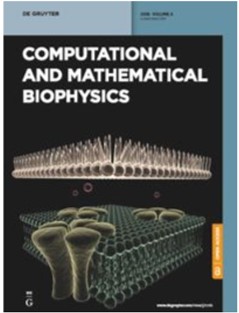
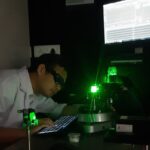
Identifying the Issue
While there are vector-host models developed to study the dengue virus at population level, very few works performed to understand the dengue viral dynamics in human body. None of the current models as per our study has considered the role of innate immune response in the defence to the dengue viral attack until recently one of them by Rotem Ben-Shachar and Katia Koelle, introduced innate immune response and showed that it can reproduce the characteristic features of the primary infection.
In this paper, a non-linear model is proposed which incorporates innate and adaptive (both cellular and humoral) immune responses, studying the Dengue virus at cellular level using a mathematical model.
Objective of the Research
- We propose to study the dynamics of within-host epidemic model of dengue infection which incorporates both innate immune response and adaptive immune response (Cellular and Humoral)
- The proposed model also incorporates the time delay for production of antibodies from B cells and understand the dynamics of this model using the dynamical systems approach by performing the stability and sensitivity analysis
- Both the above can help detect and control the dengue virus better and understand the dengue viral dynamics in human body
Who should read this?
Those working in the field of Mathematics, Bio-Mathematics, Mathematical Modeling, research, and other related academic fields, and Doctors, especially Physicians.
Solution
The critical level of the antibody recruitment rate(q) was found to be responsible for the existence and stability of various steady states. The stability of endemic state was found to be dependent on time delay. The sensitivity analysis identified the production rate of antibodies (q) to be highly sensitive parameter.
- The existence and stability conditions for the equilibrium states of the disease have been obtained
- The threshold value of time delay has been computed which is critical for change in stability of the endemic state
Key Features and Benefits
- It has been observed that that innate response co-relates with the virus titer in the early stages of the infection which can help in an early detection of a serious disease
- The production rate of antibodies (q) was found to be highly sensitive
- It was observed that the burst rate of virus particles (k) has a predictable behaviour and the rate of infection(β1) is sensitive only in some interval range
Impact
- The works presented in this paper could enhance our understanding of this complex immune response
- The model can help in detection of the disease in the early stages of the infection
Team
- Deva Siva Sai Murari Kanumoori: University of L’Aquila, L’Aquila, Italy
- D Bhanu Prakash: Department of Mathematics and Computer Science, Sri Sathya Sai Institute of Higher Learning – SSSIHL, India
- D. K. K. Vamsi: Department of Mathematics and Computer Science, Sri Sathya Sai Institute of Higher Learning – SSSIHL, India
- Carani B Sanjeevi: Vice-Chancellor, Sri Sathya Sai Institute of Higher Learning -SSSIHL
Paper Published In: Computational and Mathematical Biophysics 9, no. 1 (2021): 66-80
Read Paper Here: https://doi.org/10.1515/cmb-2020-0118
Task-sharing to screen perinatal depression in resource limited setting in India: Comparison of outcomes based on screening by non-expert and expert rater
The STAR Lab, SSSIHL, has published a new article in Asian Journal of Psychiatry that presents the task sharing approach as an effective strategy for the detection of perinatal depression in rural area of South India. This study presents a synergistic outcome from the educational and medical institutions established by Bhagawan Sri Sathya Sai Baba, Founder Chancellor, SSSIHL. This collaborative effort was carried out at Sri Sathya Sai General Hospital (SSSGH), Prasanthi Nilayam over a period of three years. The longitudinal study involved two expert doctors from the SSSGH (Prasanthi Nilayam and Whitefield), three psychiatrists (two from Schizophrenia Research Foundation, Chennai, and one from Government Medical College/Government General Hospital, Anantapur) and a biostatistician from Germany, all of whom worked continuously with the members from the STAR Lab, SSSIHL.
Study and Outcome
In this work, we have assessed the quality of perinatal depression screening by a non-expert in the context of task sharing in a rural Indian maternity service. This is a longitudinal study carried out for three years involving voluntary participation of pregnant women right from the second trimester up to 3 months post-delivery. A qualified midwife (trained by a psychiatrist and doctors from SSSGH) administered the Edinburgh Postnatal Depression Scale (EPDS), a questionnaire that is widely used for identifying possible depressive symptoms in pregnant women and new mothers. With the study participants’ consent, these EPDS sessions were recorded (audio/video) in line with the approval obtained from the SSSIHL institutional ethics committee. As part of the study, these audio/video recordings were analyzed by expert psychiatrists. Several studies have suggested that task-sharing is an effective strategy to monitor perinatal depression (PND), but no study has assessed the quality of PND detection by a non-expert, in the context of task-sharing especially in a rural Indian population. This approach further addresses the shortage of mental health care professionals (MHPs) in resource limited settings, especially in low and middle income countries and promotes remote care solutions during the pandemic. Our research study findings suggest that with adequate training, in the absence of experts (psychiatrists), non-experts (midwives) can be highly effective at task-sharing implemented for screening PND.
Impact
This study has a significant impact on society, particularly in rural areas, with respect to healthcare management. Our research outcome recommends that with sufficient training, non-experts (midwives) can be effective at task-sharing, implemented for the screening of PND at clinical centers where availability of MHPs is limited. The empowerment of non-experts for the given task will also serve as an excellent alternative to address the shortage of MHPs in resource limited areas, especially in rural areas of India. This training can also provide an alternative for remote care even during the pandemic
Team
Pradeep Kumar Badiya, Sasidhar Siddabattuni, Venkatesh Srinivasan and Sai Sathish Ramamurthy
STAR Laboratory, Department of Chemistry, Sri Sathya Sai Institute of Higher Learning, Prasanthi Nilayam, 515134, Anantapur, Andhra Pradesh, India.
Debarshi Dey
Independent Researcher, Biostatistician, Munich, 82152, Germany.
Akkamahadevi C. Hiremath
Department of Obstetrics and Gynecology, Sri Sathya Sai General Hospital, Whitefield, Bangalore, 560066, India.
Raj Lakshmi Nalam
Department of Obstetrics and Gynecology, Sri Sathya Sai General Hospital, Prasanthi Nilayam, 515134, Anantapur, Andhra Pradesh, India.
Sridhar Vaitheswaran and Aarthi Ganesh
Schizophrenia Research Foundation, Chennai 600101, Tamil Nadu, India
Yendluri Prabhakar
Department of Psychiatry, Government medical college/Government General Hospital, Anantapur, 515001, Andhra Pradesh, India
Article Published In: Asian Journal of Psychiatry
Read Article Here: https://authors.elsevier.com/a/1dKRT6gcL74LZP
Actuarial Science Research Scholars Present at The Insurance Data Science Conference, London
Mr. Rohan Yashraj Gupta and Mr. S R Pranav Sai, Doctoral Research Scholars in Actuarial Science, DMACS, SSSIHL had the honour to present their individual research works at the 3rd Insurance Data Science Conference at City, University of London on 17th and 18th of June 2021.
The Insurance Data Science Conference 2021 brought together academics and practitioners in areas including data science, analytics, machine learning, artificial intelligence, computational statistics, and software, as applied in the insurance industry. The exchange mainly focused on applications in insurance pricing, reserving, risk assessment and modelling, customer analytics, capital management, catastrophe, and econometric modelling.
Several leading Actuaries and Data Scientists in the Insurance industry submit their works every year. After a rigorous selection process select high-quality works would be selected for the presentation at the conference. SSSIHL Doctoral Research Scholars presented on the following topics:
A comparative study of using various Machine Learning and Deep Learning-based fraud detection models for Universal Health Coverage schemes and assessing the impact of COVID-19 in healthcare fraud (Rohan Yashraj Gupta)

Capturing the power of ensemble learning using GLM and Artificial Neural Network for insurance pricing (S R Pranav Sai)

SSSIHL congratulates Mr. Rohan Yashraj Gupta and Mr. S R Pranav Sai for the honour and appreciates their deep commitment to research in Actuarial Data Science, inspiring others into this new stream of research.
Novel Rational Nanohybrid Engineering approach to augment Sensor Technology capabilities
The STAR Lab, SSSIHL, has published a new paper in ACS Applied Nano Materials that demonstrates the use of a novel biopolymer, soluplus-mediated plasmonic nanohybrids for mobile phone-based biosensing applications. This judicious synergy of materials at nanoregime are utilized to revisit and overcome the perpetual problem of Ohmic lossy quenching in metals, thereby demonstrating excellent performance in sensing analytes of interest.


Identifying the Issue
- Sensors are widely used in industrial processes, public health control, homeland security, forensics, environmental health monitoring.
- Photonic nanomaterials made of metallized nanoparticles are globally used for sensor technology development. However, their true potential is plagued by inevitable intrinsic Ohmic losses, that hinder the performance of any sensing platform.
- Therefore, there is a constant need for hybrid material green technologies for global market sensor industries, using nanochemistry-based biocompatible methods.
Objective of the Research
- Identifying fundamental reasons which lead to interband Ohmic losses in terms of basic chemistry and biophysics of nanomaterials.
- Finding an economically viable green technology solution to minimize/prevent the Ohmic losses and improve the performance of plasmonic materials, which in turn translates into superior efficiencies for the industries offering solutions based on sensing technologies.
- Improving the overall sensitivity and specificity of sensor materials in comparison with cost-intensive and hazardous nano-sensor techniques.
Who should read this?
Anyone in industry, working directly or indirectly on sensor development or sensing-related technologies including, security, surveillance, monitoring, environmental safety monitoring, medical technologies, and disease diagnostics. Further, this article will be extremely useful to researchers currently faced with the problem of ‘Losses in plasmonic nanomaterials.


AgAu NanoHyrbid Engineering – A burgeoning practical solution for the problems in biosensors
- The eco-friendly and biocompatible methodologies for diverse applications in nanophotonics and biomedical domains are discussed in this work.
- Soluplus is a graft copolymer of polyvinyl caprolactam – polyvinyl acetate – polyethylene glycol. Although extensively used for improving the solubility and bioavailability of poorly water-soluble drugs, amphiphilic chemical bi-functional properties have so far not been explored for green nanosynthesis.
- The three main long-lasting challenges in plasmonic technology development have been addressed experimentally and theoretically in this research work. The proposed hybrid materials overcome the following caveats: (i) inescapable quenching in the presence of AuNPs, (ii) chemical unsteadiness in AgNPs, and (iii) inherent Ohmic losses in metallized NPs.
Key Features and Benefits
- Use of hybrid plasmonic passages to avoid Ohmic losses.
- Experimental demonstration of dequenched and augmented SPCE enhancement.
- The multifold nanogaps generated by the nano-engineered hybrids sustain innumerable hotspots catering to the attomolar sensitivity of the SPCE reporter molecule, rhodamine B (RhB).
- The proposed green nanotechnology platform is useful in disease diagnostics for monitoring the early stages of the disease and also aid in the fabrication of smart sensor chips for use in Point-of-Care (POC) devices.
Impact
- A simple, user-friendly, cost-effective methodology presenting a state of “dequenching the quenched” phenomenon successfully addressing the decade-long issue of ‘zone of inactivity’ in plasmonics.
- The subject platform is expected to find immediate deployment for real-time POC medical diagnostics. It is strongly believed that this study presents a stepping stone to a plethora of exciting plasmonic nano-architectures and disruptive diagnostics in near future with the aid of Au-Ag-Au noble metal plasmon passage rationality.
- An industry or market seeking such devices with augmented sensitivity could take forward the proposed methodology for utility in early disease diagnostics, environmental safety, and industrial applications.
- A green approach for Nano-engineering of AgAu inter-plasmonic and photonic sensor platforms that are of immense benefit for low- and middle-income countries, in resource-limited settings.
- The mobile phone-based sensor platform presents a user-eco-friendly and economical detector compared to existing high-cost spectrophotometers.
Team
Aayush Rai, Seemesh Bhaskar, Sai Sathish Ramamurthy. STAR Laboratory, Department of Chemistry, CRIF, Sri Sathya Sai Institute of Higher Learning, Prasanthi Nilayam, Puttaparthi, Anantapur, Andhra Pradesh 515134, India
Paper Published In: ACS Applied Nano Materials
Read Paper Here: https://doi.org/10.1021/acsanm.1c00841
Student Achievement – CAS Trust Scholarship Award (Actuarial Science)

Congratulations to Mr. Sankar Krishna for receiving the 2021 CAS Trust Scholarship award!
Mr. Sankar Krishna has two actuarial papers to his credit from IFoA, UK. He wrote his third year BSc (Hons) Mathematics exams and will be pursuing MSc Maths (Actuarial stream) with focus on Property & Casualty risks. He spent the summer of 2020 interning at Tech Actuarial, focusing on claims analytics and pricing tool for group insurance products. He participated in the CAS Independent Summer Program and Actuarial Data Science workshop at the University. He is a theatre and cricket enthusiast, and plays the Trombone in the University Brass Band.
We wish him good luck in continuing actuarial education at SSSIHL.
ABOUT CAS
The Casualty Actuarial Society (CAS) is a leading international organization for credentialing and professional education. Founded in 1914, the CAS is the world’s only actuarial organization focused exclusively on property and casualty risks and serves over 9,100 members worldwide. CAS members are experts in property and casualty insurance, reinsurance, finance, risk management, and enterprise risk management. Professionals educated by the CAS empower business and government to make well-informed strategic, financial and operational decisions.
CAS TRUST SCHOLARSHIP PROGRAM
The objective of the scholarship is to further students’ interest in the property/casualty actuarial profession and to encourage the pursuit of the CAS designations.
Scholarships are awarded on the basis of individual merit. The CAS Trust Scholarship Program will award up to eight scholarships to deserving students for the 2021-2022 academic year. Scholarships will range from $2,500 (4 Awards) to $5,000 (4 Awards).
New GraSP Engineering to Help Enhance the Performance of Sensing Technologies
The SSSIHL STAR Lab Research team, led by Asst. Professor Dr. Sai Sathish Ramamurthy, has published a new paper in ACS Applied Materials & Interfaces that explores the use of a novel metal-free, graphene oxide-based photonic crystal framework (GraSP engineering) for Biosensing application. It enhances the performance of plasmonic materials and overcomes Ohmic losses in metals.
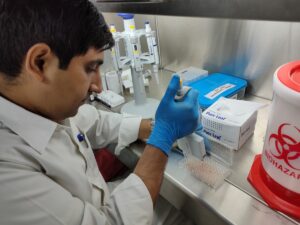
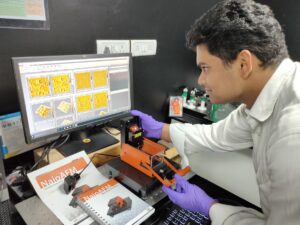
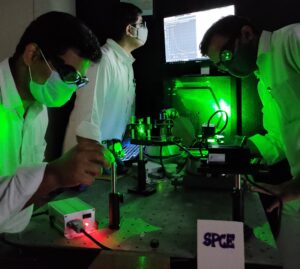
Identifying the Issue
- Sensors are of wide-spread use in industrial processes, public health control, homeland security, safety and monitoring
- Plasmonic materials made of metal nano-architectures are world-wide used for sensor technology development. However, their performance is plagued by inevitable intrinsic Ohmic losses, that impede the performance any sensing platform.
- As a result, there is constant hunt for alternative material technology development for global market sensor industries
Objective of the Research
- Identifying the root cause which leads to Ohmic losses
- Finding a cost-effective non-metal-based solution to minimize/stop the Ohmic losses and improve the performance of plasmonic materials, which in turn translates into greater efficiencies for the industries offering solutions based on sensing technologies
- Explore the possibility of the solution aiding in improving the overall sensitivity and specificity by 3-4 times as compared to existing metal-dependent sensor techniques
Who should read this?
Anyone in the industry, working directly or indirectly on sensor development or sensing related technologies including, security, surveillance, monitoring, environmental safety monitoring, medical technologies, and disease diagnostics.

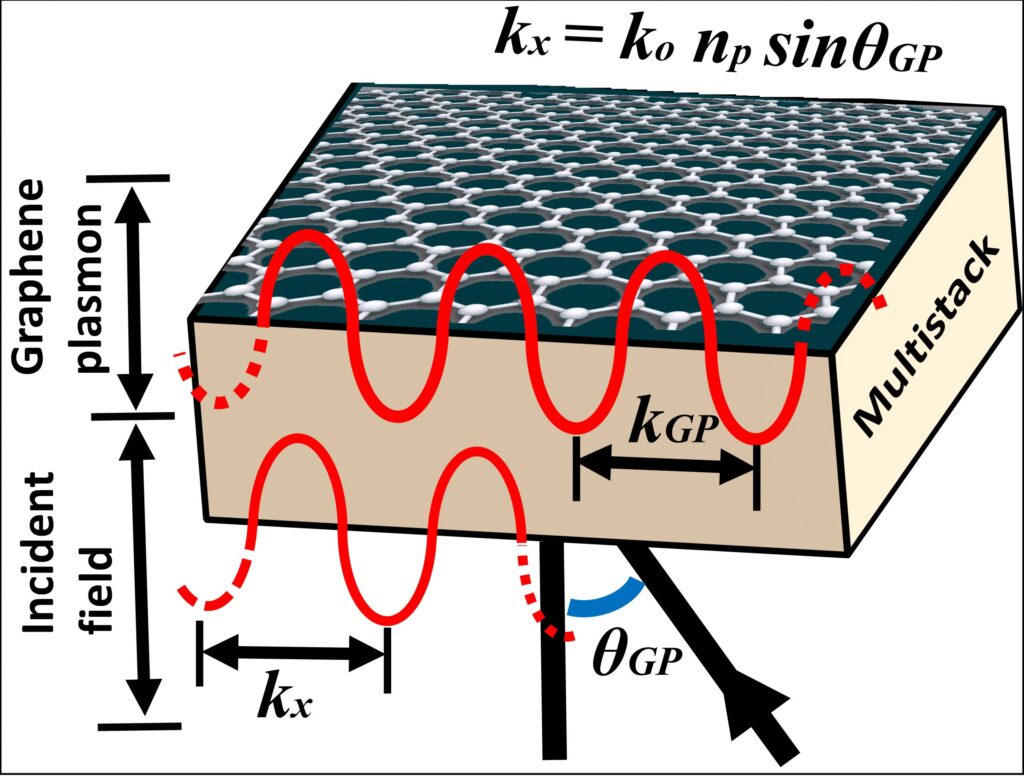
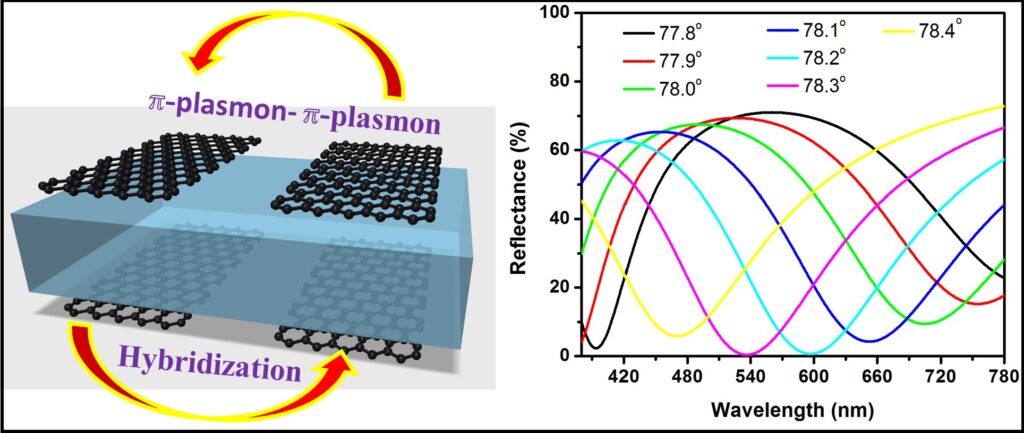

GraSP Engineering – A Eureka moment for the future of Sensing technologies
- The nanophotonic performance of the multistack was analyzed and successfully demonstrated to realize ‘graphene oxide plasmon-coupled soliton emission’ (abbreviated as GraSE) with steering/beaming emission characteristic as well as ‘graphene oxide plasmon-coupled emission’ (abbreviated as GraPE) with directional property
- Since both beaming GraSE and directional GraPE could be captured in a single platform, the combination led to the birth of GraSP emission platform
- An everyday example of soliton is a self-sustaining water bubble that maintains its shape as it moves, all the way from the bottom of the tank to the surface, in completely still water. Similar solitons transporting emitted photons in GraSP platform are successfully demonstrated in this research work for augmented sensor performance.
- GraSP can now simplify the existing surface plasmon resonance (SPR) technology with enhanced performance
Key Features and Benefits
- Use of non-metal platform to avoid Ohmic loss
- GraSP improves the overall sensitivity and specificity by 3-4 times as compared to existing metal-dependent sensor techniques
- The extreme light entrapment and augmentation via hotspots from surface states and nanoscopic volumes aided in lowering the detection limit of the HuIFN-γ antigen to 1.95 pg mL−1, for superior performance in resource limited settings
- GraSP platform is useful in disease diagnostics in early stages of disease conditions and also help in the advancement of Point-of-Care (POC) devices
Impact
- A simple, user-friendly, cost-effective methodology is adopted to realize GraSP engineering with soliton-aided metal analogues and directional emission patterns on a conventional existing sensor technology based on plasmonic platform
- The subject platform is expected to find immediate deployment for real-time point-of-care medical diagnostics. It is strongly believed that this study presents a stepping stone to a plethora of exciting plasmonic architectures and disruptive diagnostics in near future.
- An industry or market seeking such devices with augmented sensitivity could take forward the proposed methodology for utility in early disease diagnostics, environmental safety and industrial applications
- GrasP is especially beneficial for low- and middle-income countries
Team
Seemesh Bhaskar, Naga Sai Visweswar Kambhampati, K. M. Ganesh, Mahesh Sharma P, Venkatesh Srinivasan, and Sai Sathish Ramamurthy. STAR Laboratory, Department of Chemistry, Sri Sathya Sai Institute of Higher Learning, Prasanthi Nilayam, Puttaparthi, Anantapur, Andhra Pradesh 515134, India.
Paper Published In: ACS Applied Matter Interfaces.
Read Paper Here: https://pubs.acs.org/doi/10.1021/acsami.1c01024
Sri Sathya Sai Institute of Higher Learning, India, to Collaborate with Sweden’s Uppsala University for ‘Bio-Materials Research’
Puttaparthi, 9 April 2021: Sri Sathya Sai Institute of Higher Learning (Deemed-to-be University), Puttaparthi, Andhra Pradesh, today entered into a research collaboration agreement with Uppsala University, Sweden, in the area of ‘Bio-Materials Research.’
The agreement was signed by Prof. B. Sai Giridhar, the Registrar, on behalf of Sri Sathya Sai Institute of Higher Learning (SSSIHL) and Prof. Åsa Kassman, Chairperson, Department of Material Science and Engineering, Uppsala University. H.E. Shri Tanmaya Lal, the Indian Ambassador to Sweden, presided over the event, along with Prof. (Dr.) C. B Sanjeevi, the Vice-Chancellor of the Sri Sathya Sai Institute of Higher Learning, Puttaparthi.
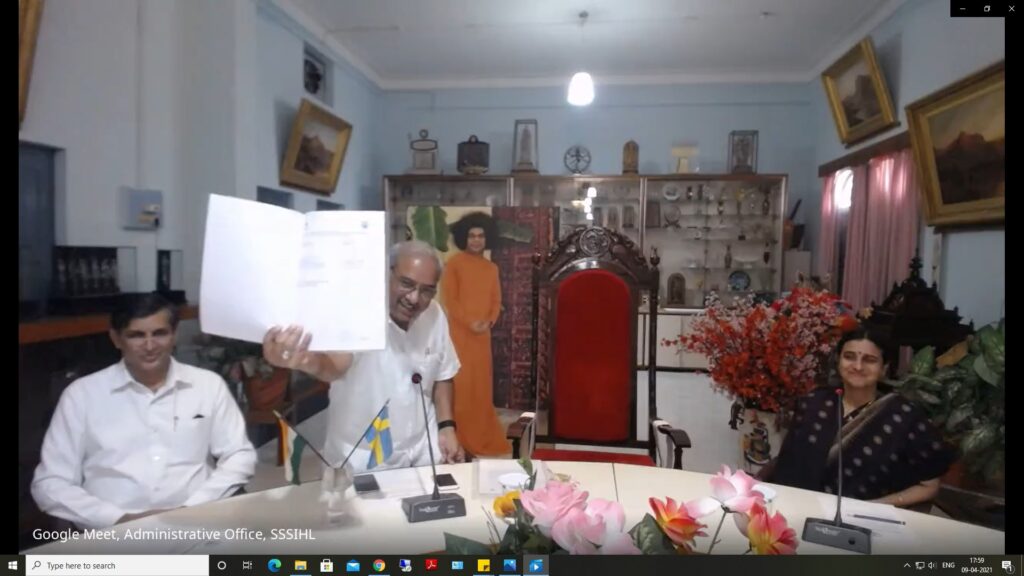
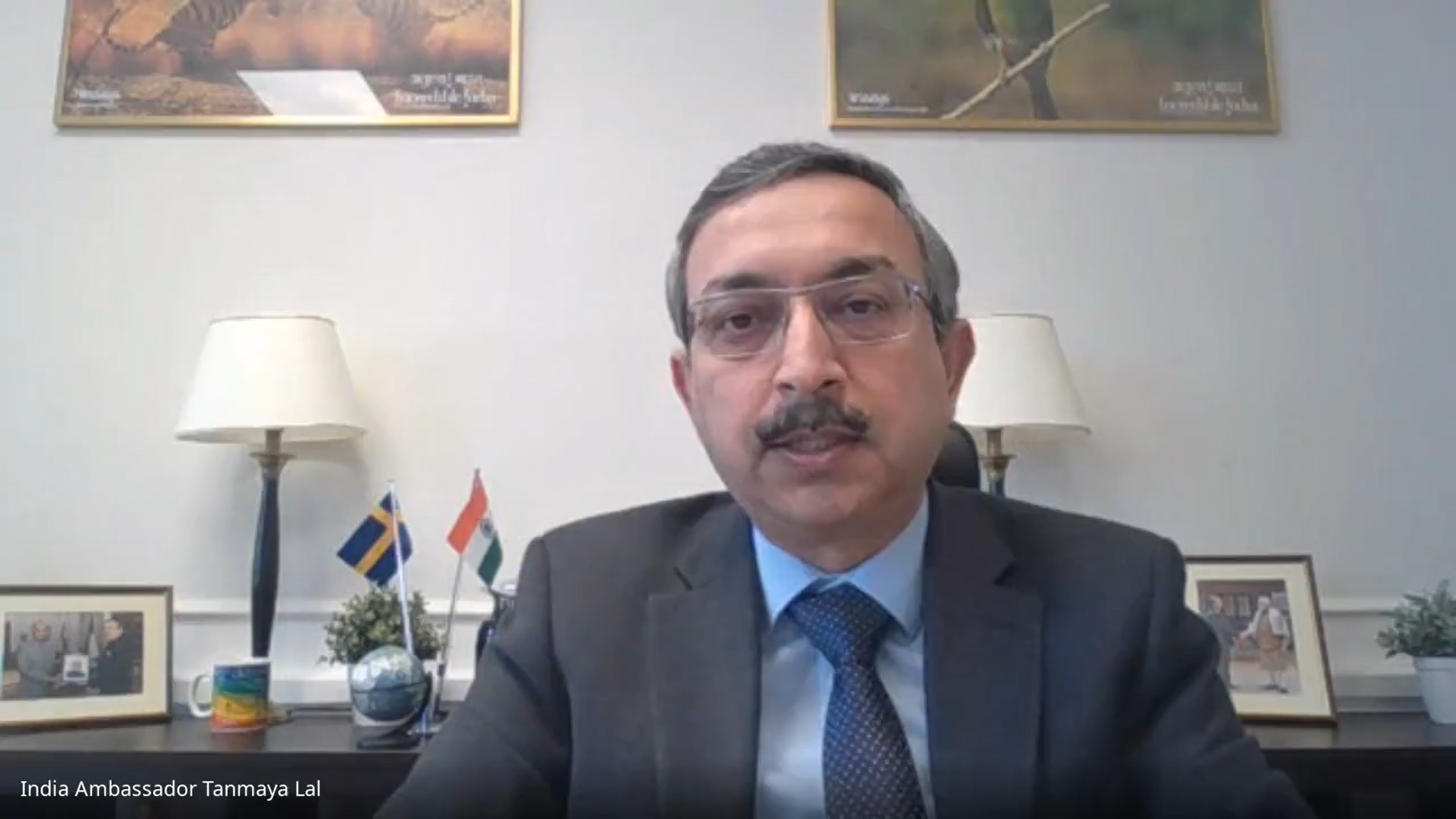
The collaboration will see both Uppsala University and Sri Sathya Sai Institute of Higher Learning leverage each other’s skills and research capabilities in the areas of bio-materials, leading to the development of dental and bone implants with the objective of harnessing its translational potential. This research will be led by Dr. (Ms.) Deepa Seetharaman, Principal Investigator (PI) for the SSSIHL, India, and Dr. Håkan Engqvist, (PI) for Uppsala University, Sweden.
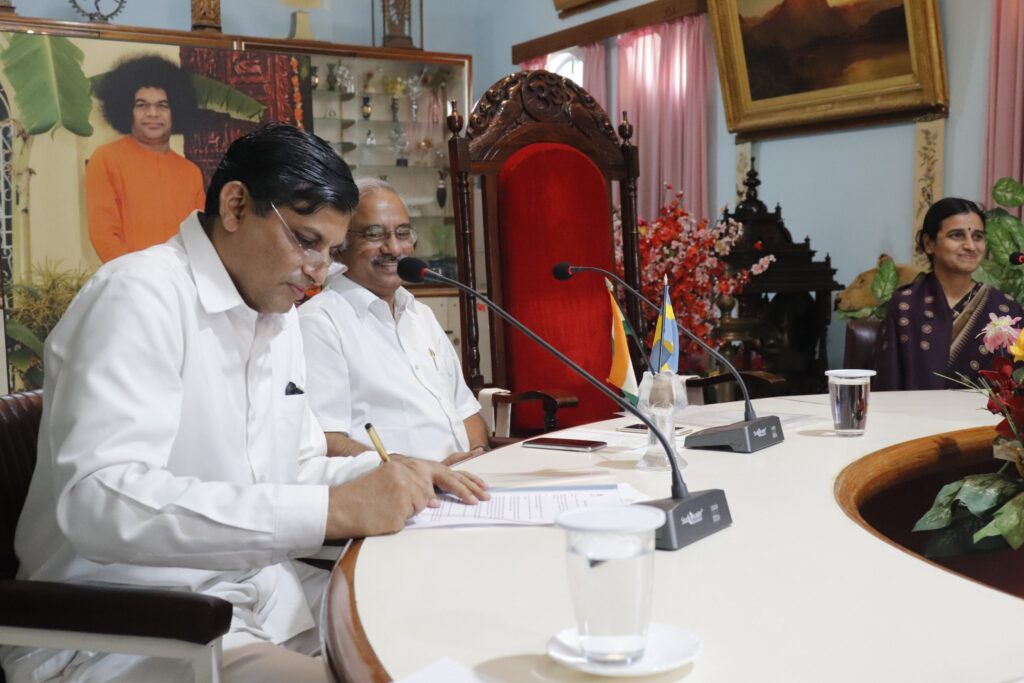
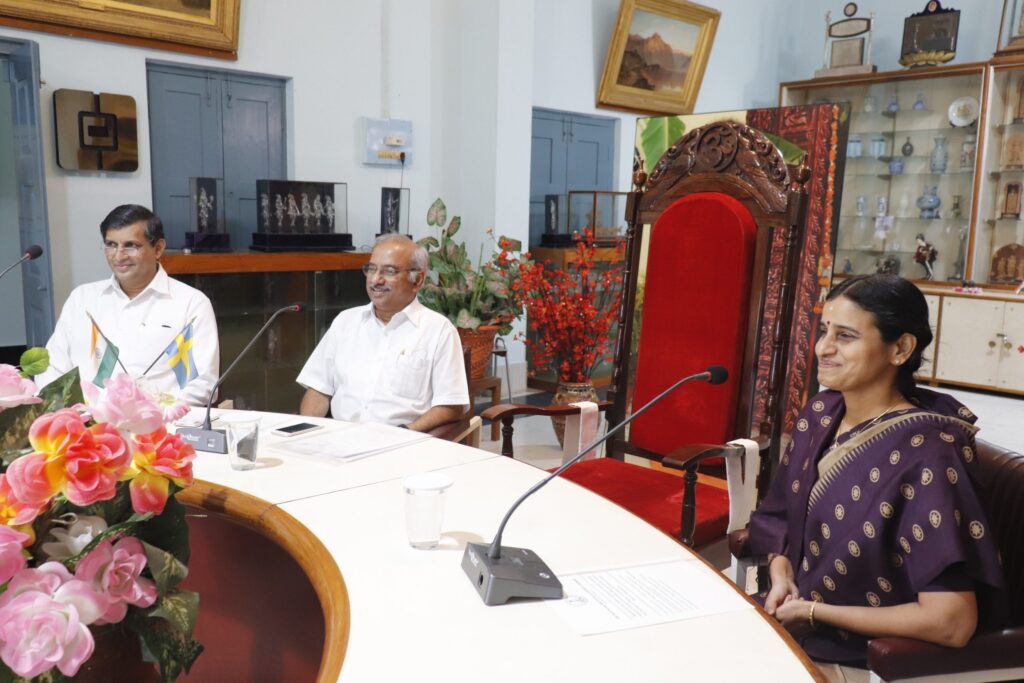
This research collaboration is an important and prestigious landmark for the Sri Sathya Sai Institute of Higher Learning. Hence, we dedicate this partnership to Sri Sathya Sai Baba, the Revered Founder Chancellor, SSSIHL, on whose guiding principles the institute was conceived as a Modern Gurukula.

About Uppsala University
Founded in 1477, Uppsala University is Sweden’s oldest university – well known for famous alumni scientists and inventors of the likes of Carl Linnaeus, Anders Celsius, to name a few and over 15 Nobel Laureates. Ranked 111 (THE Ranks) in the list of the world’s best universities in 2021, Uppsala University is a comprehensive research-intensive university with a strong international standing, with an ultimate objective to conduct education and research of the highest quality and relevance while making a long-term difference in society. The University has over 50,000 students, more than 7,000 employees, and a turnover of around SEK 7 billion, offering 39 different masters programmes, covering over 60 different specializations, and driving “Quality, Knowledge, and Creativity for a better world.”
About Sri Sathya Sai Institute of Higher Learning
The Sri Sathya Sai Institute of Higher Learning (SSSIHL) (Deemed-to-be-University), Prasanthi Nilayam, is one of the few institutions in the world offering values-based quality education free of charge to the students at the university level. Ethics and morals form the undercurrent of every subject taught at the university, providing a holistic framework of inter-personal development for its students combined with academic excellence. This year, we celebrate the commencement of the University’s 40th year of excellence.
The Sri Sathya Sai Institute of Higher Learning (SSSIHL) also provides a strong research environment, with exceptional academic practices, that has resulted in the growth of national and international collaborations. The Central Research Instruments Facility (CRIF), based at the Prasanthi Nilayam Campus of the SSSIHL, is one of the few facilities in the country that houses advanced Characterisation/ Analytical Tools to carry out Translational Research in various areas of Science and Technology.
For more Information, contact:
Prof. B. Sai Giridhar, Registrar, SSSIHL, email: registrar@sssihl.edu.in; Tel: +91 8555287239
Dr. Håkan Engqvist, PI, Uppsala University, email: hakan.engqvist@angstrom.uu.se
Tel: +46-70-2569500



